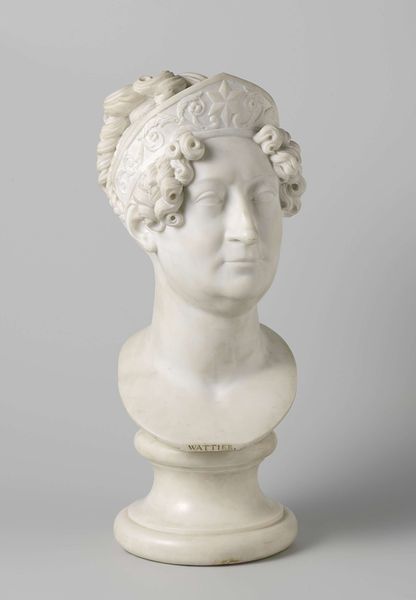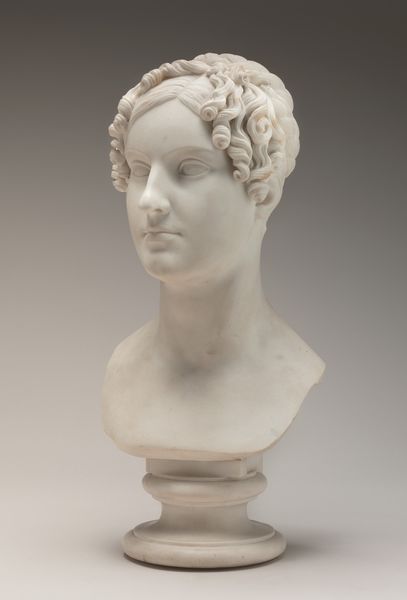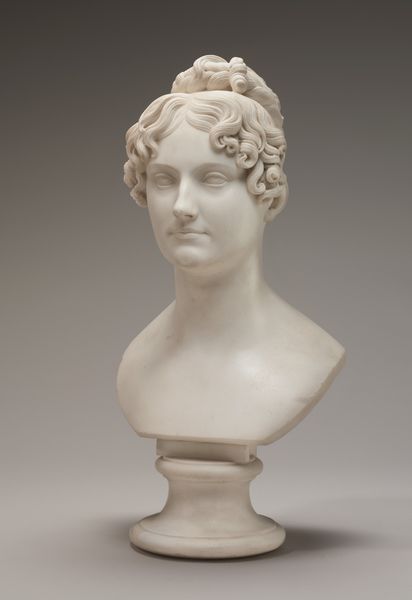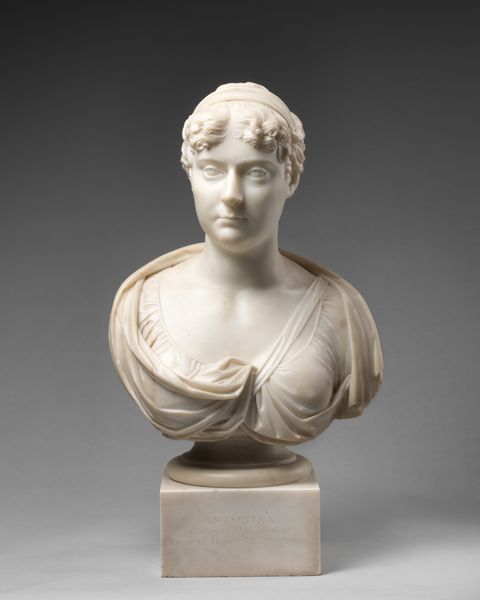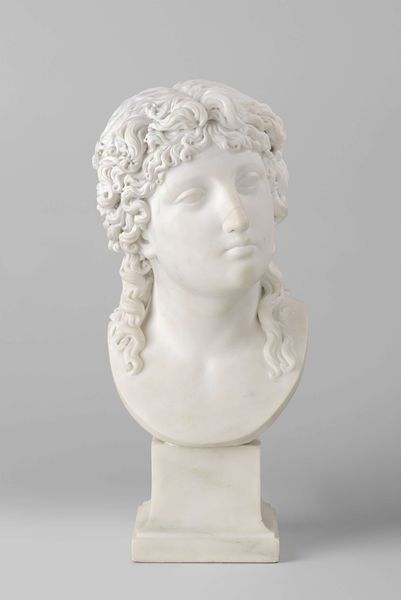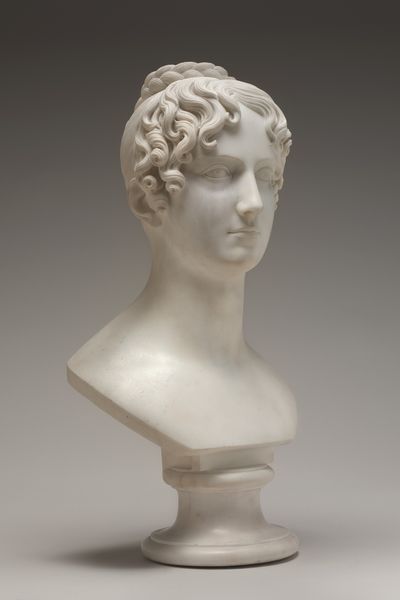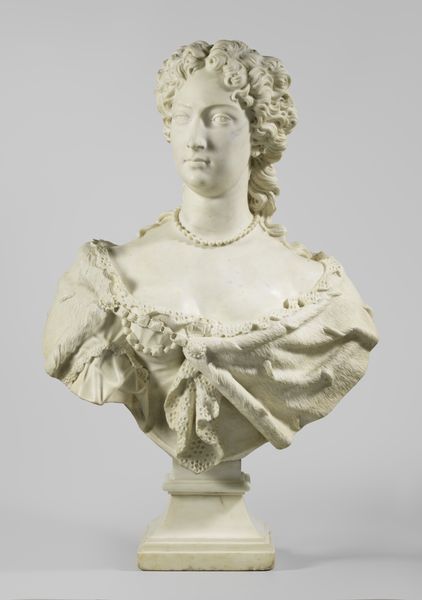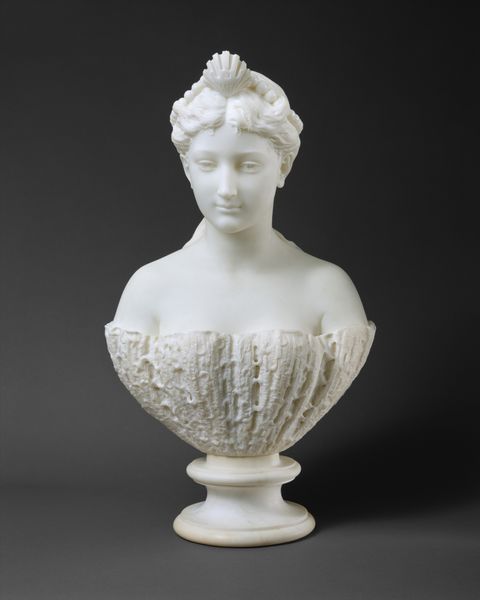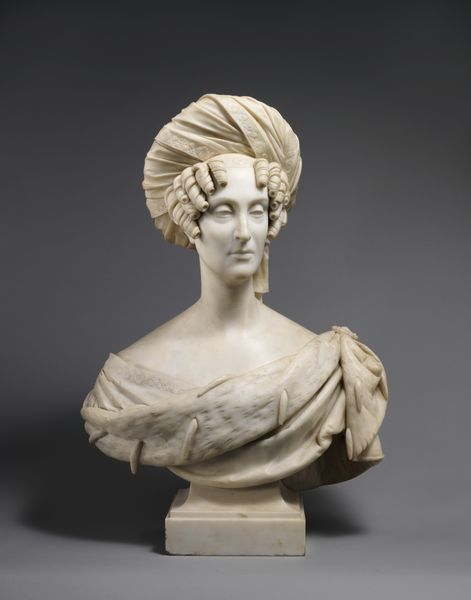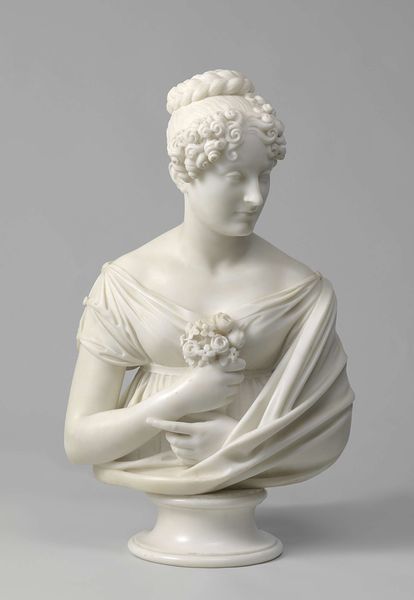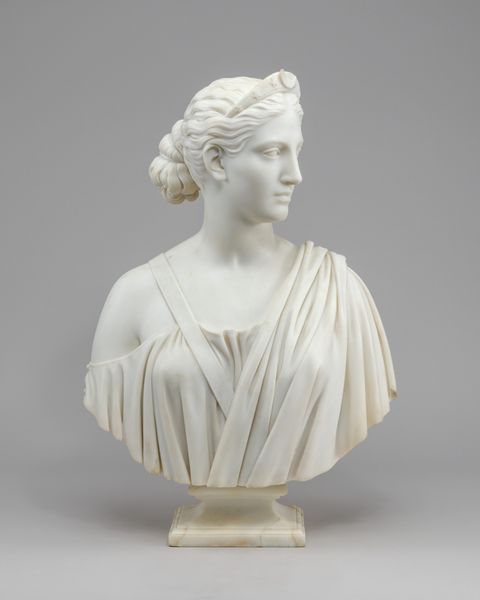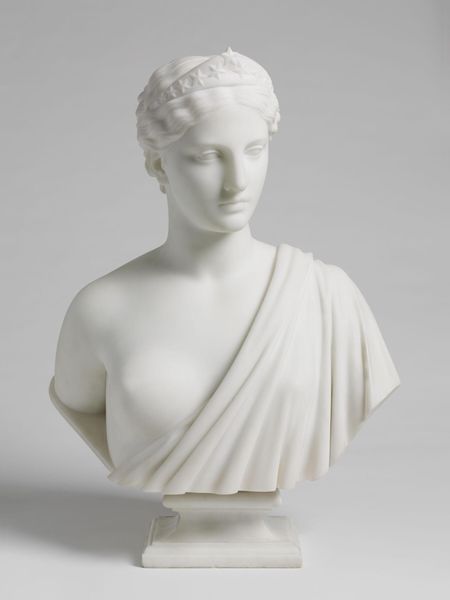
sculpture, marble
#
portrait
#
neoclacissism
#
classical-realism
#
sculpture
#
marble
Dimensions: height 55.0 cm, width 22.5 cm, depth 30.0 cm, weight 22 kg
Copyright: Rijks Museum: Open Domain
Curator: Welcome. Before us stands "Portrait of Johanna Cornelia Ziesenis-Wattier," a marble sculpture crafted around 1820 by Paulus Joseph Gabriël. Editor: It strikes me as incredibly austere, yet there is a hint of approachability. The marble's smooth texture creates a subdued yet radiant presence. Curator: Yes, the texture and lack of color certainly amplify the pure geometry of the piece. The cool detachment in the gaze relates strongly to Neoclassical aesthetics that emphasizes clarity, order, and restraint, qualities highly valued at the time. The composition leads one to focus primarily on form and line. Editor: The woman’s diadem is of interest – the crown of stylized geometric motifs, almost heraldic, perhaps hinting at social standing, as these symbols traditionally carried the weight of power and lineage. It reminds me of civic virtue rendered in stone. The rigid, symmetrical composition adds to this aura of dignity. Curator: Observe, however, the deliberate departure from pure symmetry in the subtle turn of the head, imbuing the sculpture with a semblance of animation. Note, too, the modulation of planes defining the face. Editor: These nuances animate the bust. The laurel wreath is fascinating too, connoting achievements and victory and, by extension, associating Wattier with attributes far beyond mere wealth or status. Curator: This is further underlined by the subject’s idealized features – a nod toward the artistic conventions inspired by classical antiquity. Consider, too, the formal presentation itself: The geometric truncation creates a powerful statement about classical realism. Editor: The cultural coding certainly adds layers of complexity. It's as much an ideological statement as a portrait, revealing much about that era’s cultural aspirations and the status imbued in this portrait bust. Curator: Indeed. Examining the overall composition—the material properties, the balance, the geometry — grants unique insight into Gabriël’s formal concerns. Editor: And looking at the symbol embedded there unveils narratives of worth and status. It’s in that tension where it truly engages the imagination, wouldn’t you say?
Comments
rijksmuseum about 2 years ago
⋮
The Dutch actress Johanna Wattier was a true diva in her time, renowned for her interpretation of French theatrical roles. Accordingly, Gabriël gave her a self-possessed, almost regal air in this portrait bust. He derived his inspiration from portraits of Napoleon’s mother and sister by his famous teacher, Canova.
Join the conversation
Join millions of artists and users on Artera today and experience the ultimate creative platform.
